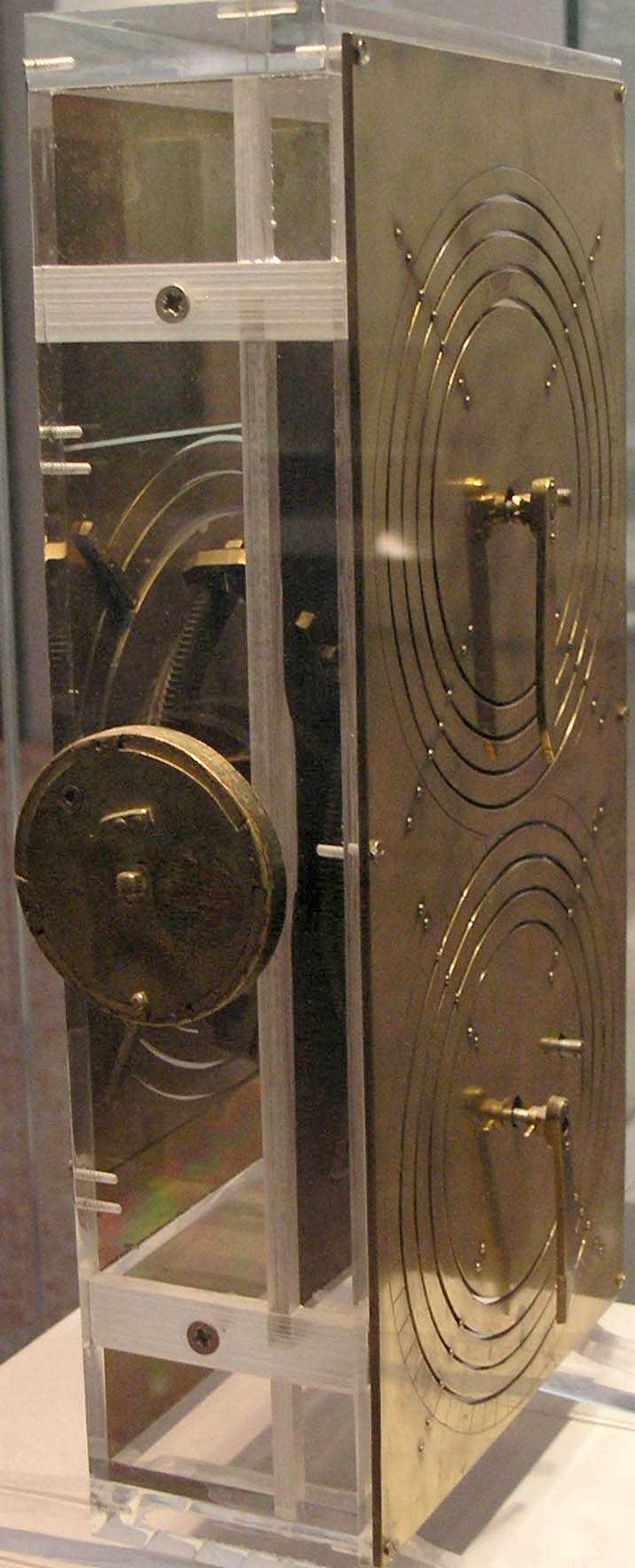Difference between revisions of "History of Computers - Antikythera Mechanism"
m (History of computers - Antikythera mechanism moved to History of Computers - Antikythera mechanism: Title Mispelled) |
|
(No difference)
| |
Revision as of 15:00, 6 October 2009
Pflam 09:27, 1 September 2009 (CDT)
Antikythera Mechanism
The Antikythera Mechanism was a complex calculator used to decide the exact location of the sun, moon, and several other stars, all done by turning a hand crank to a specific position. This mechanism was created somewhere between the years 150 - 100 B.C., possibly by a greek philosopher astronomer. [1]
original

reconstruction

The original surviving piece of the device (much of it was eroded by the salty sea water and changing tides). There are several more reconstructions of this amazing machine, and they can be seen at the American Computer Museum in Bozeman, Montana and the Children's Museum of Manhattan in New York and in Kassel, Germany.
Overview
The antikythera mechanism has somewhere between 30 and 72 gears, and is so amazing because of its minituriazation. It is based upon the geocentric model of the earth, and shows the position of other celestial bodies from earth's perspective. The mechanism is made up of 3 main dials, all of them showing a different calender or set of special dates. The antikythera mechanism also may have very well been used to calculate the date of the ancient Greek olympic games. The Antikythera Mechanism was found in the wreck of a ship called the Antikythera (hence the name) in the year 1901, but its significance was not known until much later.
significance
The antikythera mechanism is know by many as the first analog computer, or mechanical computer. A more modern and well known analog computer is the Slide Rule. The Antikythera mechanism is the predecessor to any mechanical computers that came after, and also many types of calendars or devices used to predict dates, times, lunar eclipses, or other astronomical events.
(\__/)
(='.'=)
(")_(")
references
Links
http://www.antikythera-mechanism.gr/project/overview
http://www.guardian.co.uk/science/2006/nov/30/uknews
http://news.bbc.co.uk/2/hi/science/nature/6191462.stm
http://www.hpl.hp.com/research/ptm/antikythera_mechanism/index.html